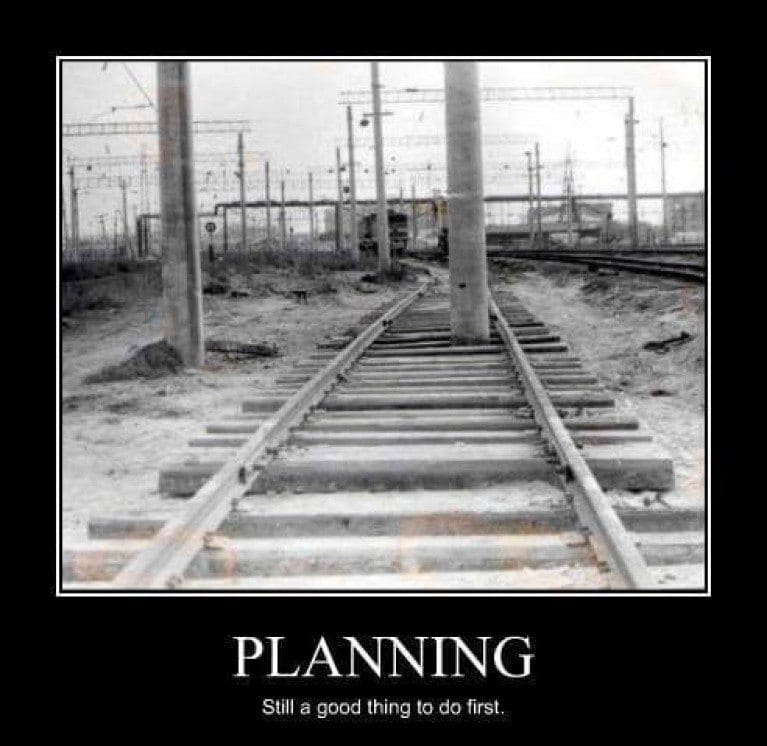What best in class PDM adopters are doing differently…

It’s been a little over a year since SOLIDWORKS released PDM Standard as part of the SOLIDWORKS Professional and Premium packages and announced the retirement of Workgroup PDM, with the final release coming in 2017 and support for the product ending on December 31st, 2018. Since then, the increase in adoption of PDM Standard or Professional from our partners has been at an incredible rate. If the volume of PDM implementations (or Workgroup PDM migrations) the 3DVision Technologies service team completed last year can tell us anything it’s that PDM adoption is growing steadily and we expect more companies will adopt PDM in 2017 than any year prior.
In lieu of that expectation of PDM adoption, I feel now is an appropriate time to discuss what, in my opinion, is the most common mistake when implementing either PDM Standard or PDM Professional. In my experience, organizations that skip this one critical piece of a PDM implementation process experience slower user adoption, longer implementation timelines and vaults that are in a continuous state of flux. And that’s just in the beginning! Issues I’ve seen in more mature PDM implementations include overhauls in the PDM configuration and in the worse-case scenarios, forced to start over with a new vault from scratch and migrate data over. It can be frustrating, painful and cost organizations hours and hours of rework. But fear not, as avoiding these symptoms is simple; akin to washing your hands to avoid catching a cold. And just like washing your hands, it is a process that requires very little time and investment (unless you’re spending a boatload on soap, but then again, you probably have other problems if that’s the case) but yields tremendous value consistently over time.
So… Let’s get to the point already before you wash your hands of this blog…

The magic elixir. So simple to do yet for whatever reason it is so often overlooked. This is how best in class PDM adopters are successful and keep their PDM system on the tracks (terrible, I know.) One of the greatest pieces of professional advice I ever received was when I first came out of school at my first job as an engineer. I had this great new product idea (I thought at the time, anyway) that I shared with my manager at length. God love him, he entertained me for a while and gave me some positive feedback after I described it all to him. He said he would think about it and get back to me. Well, about two-weeks had passed and I hadn’t heard anything from him so I approached him about it again. To my surprise, he had absolutely no recollection about what I was talking about nor our previous conversation. I was very frustrated to say the least, which was clearly visible to him (my last name ends in a vowel, so… yeah) and that’s when he asked me, “Did you write it down? Is there anything you can show me?” I had nothing. I hadn’t written, drawn or napkin sketched anything. When I shook my head “no,” that’s when he laid it on me. “Then it doesn’t exist. If it isn’t written down, it’s nothing, its air. It doesn’t exist.” Regardless of how I felt at that moment, I have come to realize truer words were never spoken. We may have a concept in our minds, and we may even assume others do to. But we can’t be sure until we all see it. And that’s what happens more often than not when we talk about planning. Everyone “knows” our process but it’s never been written down and in reality, we have multiple units or groups that view the processes differently. That’s why this step is so critical, we create a document or documents that can be reviewed and built from because we know they are the truth. Here are a few items I find simple to follow when building that truth and your PDM plan:
- Baselining – They capture the current state of their organization and processes accurately (this includes the status of their current intellectual property or designs)
- Task to task approach – They identify the areas in their current state they want to address and modify it before implementing into PDM. They adopt one change at a time.
- Awareness – They acknowledge that PDM is a living, breathing thing that grows and changes over time. They know It is not static, nor should it be. They know PDM is a tool, not a magic wand, and it only works as well as the application they intend for it and the knowledge of the users defining it.
- Goal-posting – They capture what they want to have their processes look like in 3 to 5 years based on what they know about their business goals and trends.
- Setting the Destination – They plan their PDM implementation with the future in mind.
If your company is planning to adopt PDM (Standard or Professional), or you are a new adopter of PDM, you’ll really want to take heed to what best in class PDM adopters do differently to realize the full value they expect when implementing PDM. If your saying that won’t be me, I don’t need a plan, just keep in mind, someone did this:

… and this:

They really needed a plan to figure that out. Be more like this:

So I’m not thinking this:


 Blog
Blog